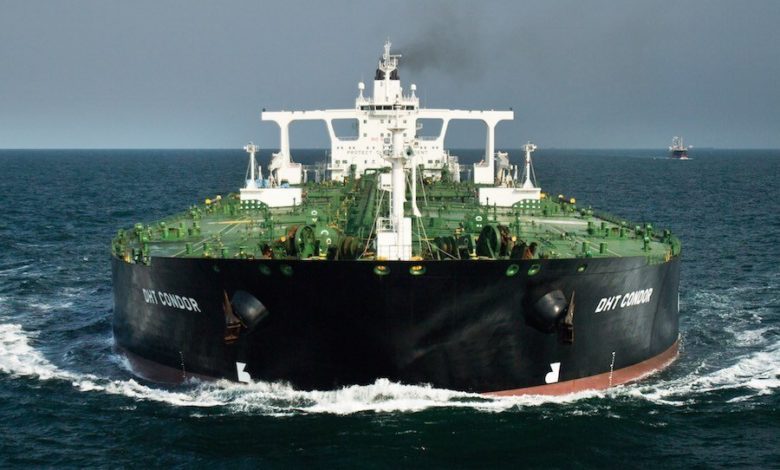Are VLCCs set to be 2019’s star performer?

The start of 2019 kicked off with a flurry of very optimistic analyst reports on the prospects for VLCCs. After a dire couple of years many tipped this sector to see the most improvement during 2019. Cleaves Securities, for instance, last month published a very bullish report on crude tankers, suggesting the cyclical expansion for this sector has only just begun. Five-year-old VLCCs should appreciate in price by 44% by the end of next year, Cleaves suggested.
It certainly remains volatile, and the threat of overcapacity is a constant present, but the question remains: Are VLCCs set to be 2019’s star performer?
Rajesh Verma, a tanker analyst at Drewry, reckons expected changes in crude trade patterns will benefit the VLCC market.
“With the OPEC’s production cut in place, the majority of the incremental global oil demand will be met by the higher production in the US. Moreover, as the majority of the growth in global refinery runs in 2019 will come from the Middle East and Asia, the crude flows from the Atlantic market to Asia will increase during the year,” Verma says.
Verma believes the expected increase in US production will translate into an increase in the country’s long-haul exports to Asia, which will boost tonne-mile demand for the large crude carriers, adding that the recent US sanctions on Venezuela will further support the tonne-mile demand for large crude carriers.
“The US is the largest importer of Venezuelan crude and imported around 500,000 barrels per day during January-October 2018. In the absence of US purchases, only complex refineries in Asia will be able to process the heavy sour crude from Venezuela. However, Venezuela will have to discount its crude in order to displace the heavy Middle Eastern crude,” Verma explains.
Short-haul US crude imports from Venezuela are likely to be replaced by long-haul imports from the Middle East, the Drewry analyst predicts. Similarly, relatively short-haul Asian imports from the Middle East could be replaced by long-haul imports from Venezuela.
“Although, VLCC fleet growth in 2019 will be strong after the last year’s stagnation, freight rates will increase on the back of strong growth in tonne-mile demand,” Verma predicts.
Ralph Leszczynski, chief analyst at shipbroking house Banchero Costa, also shares the growing optimism for VLCCs.
“This should be put in context though, that we are just only emerging from a few truly dreadful years, with early 2018 being the bottom of the cycle,” says Leszczynski.
In Leszczynski’s opinion, the past few dreadful years for the crude tanker market were primarily driven by fleet overcapacity, and the recovery of the market is in no small part down to the well contained net fleet growth in 2018, at less than 1%, thanks to record-high demolition activity.
“In 2019 and 2020 we unfortunately still see deliveries at levels similar to the past three years, as contracting of newbuildings remained sustained in recent years.
Therefore, the hope is that demolition activity will remain strong to keep fleet expansion manageable. I believe it is likely to be so,” Leszczynski says, adding that the age profile of the current VLCC fleet is very supportive of strong demolition volumes in the coming years, while coming regulation concerning ballast water treatment systems (BWTS) and low-sulphur fuels will further incentivise scrapping.
Additionally, according to Leszczynski, the market could see in 2019 a one-off boost from the installation process of scrubbers as at least 70 VLCCs, about 10% of the current fleet, are planning to retrofit with scrubbers during 2019 or the first half of 2020, which will have to take about 30 days of off-hire to install the technology.
“Whilst oil production in the US has been growing for a number of years, exports are only starting to grow now, as infrastructure is being converted from import to export in line with the new realities. As infrastructure in the US is further upgraded in 2019 and 2020, more US crude will find its way on VLCCs,” Leszczynski predicts.
Court Smith, an analyst at VesselsValue, believes that much of the optimism surrounding VLCCs comes from the rate run up seen in late 2018.
“Owners were speeding up noticeably on their ballast leg to reposition to their next load region. Many owners are optimistic as consolidation has increased negotiating power in the large crude tanker space,” Smith says.
However, contrary to Leszczynski’s thoughts, Smith is concerned about the number of new deliveries.
“The rate recovery was dependent on a high level of recycling in 2018, and we are unlikely to see the same level of removals in 2019,” Smith says.
“Total ton mile demand for VLCCs remains high but fell noticeably from its peaks last year. Part of this decline is due to the OPEC production cuts. This has contributed to a fall in ton mile demand, given the current price trend in oil we are unlikely to see a large surge in output, so expect this year’s demand to remain close to last year,” Smith says concluding that this year should be an improvement over 2018, but owners are best advised to wait till 2020 for a proper rate upside.
